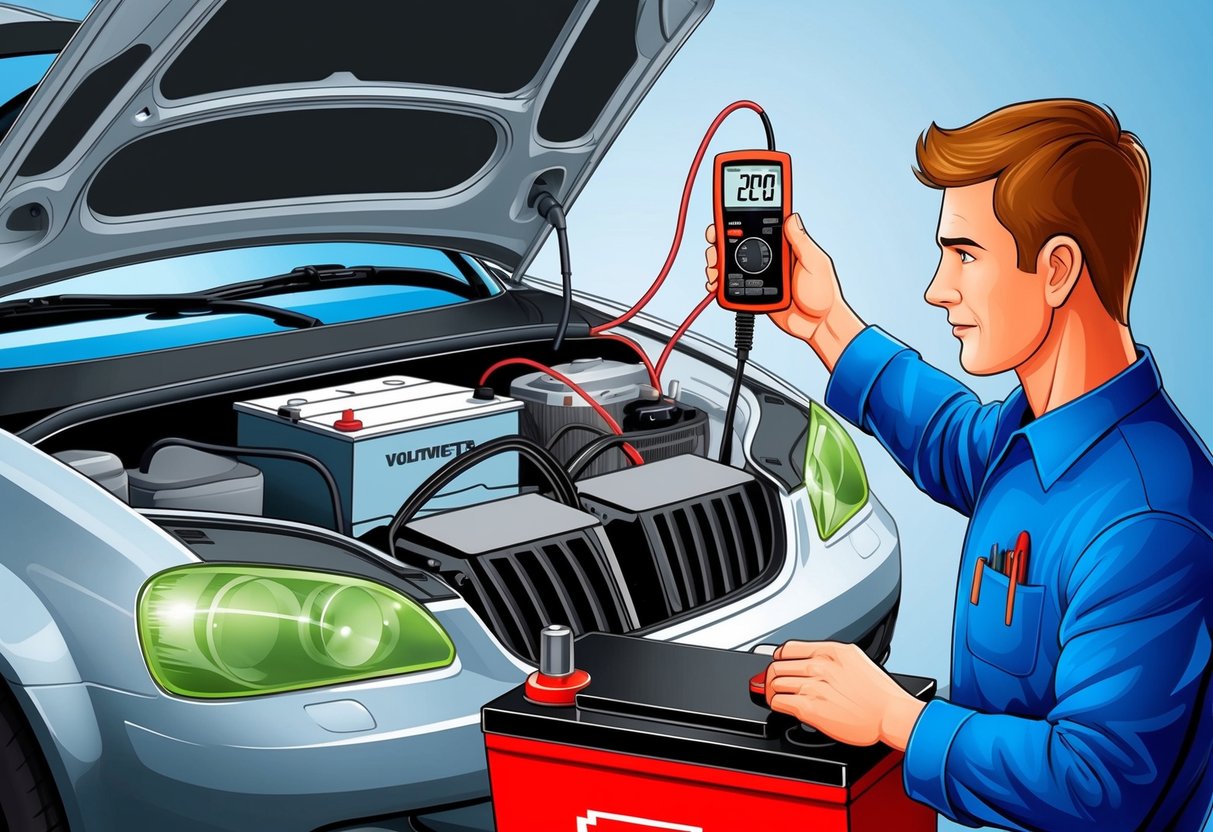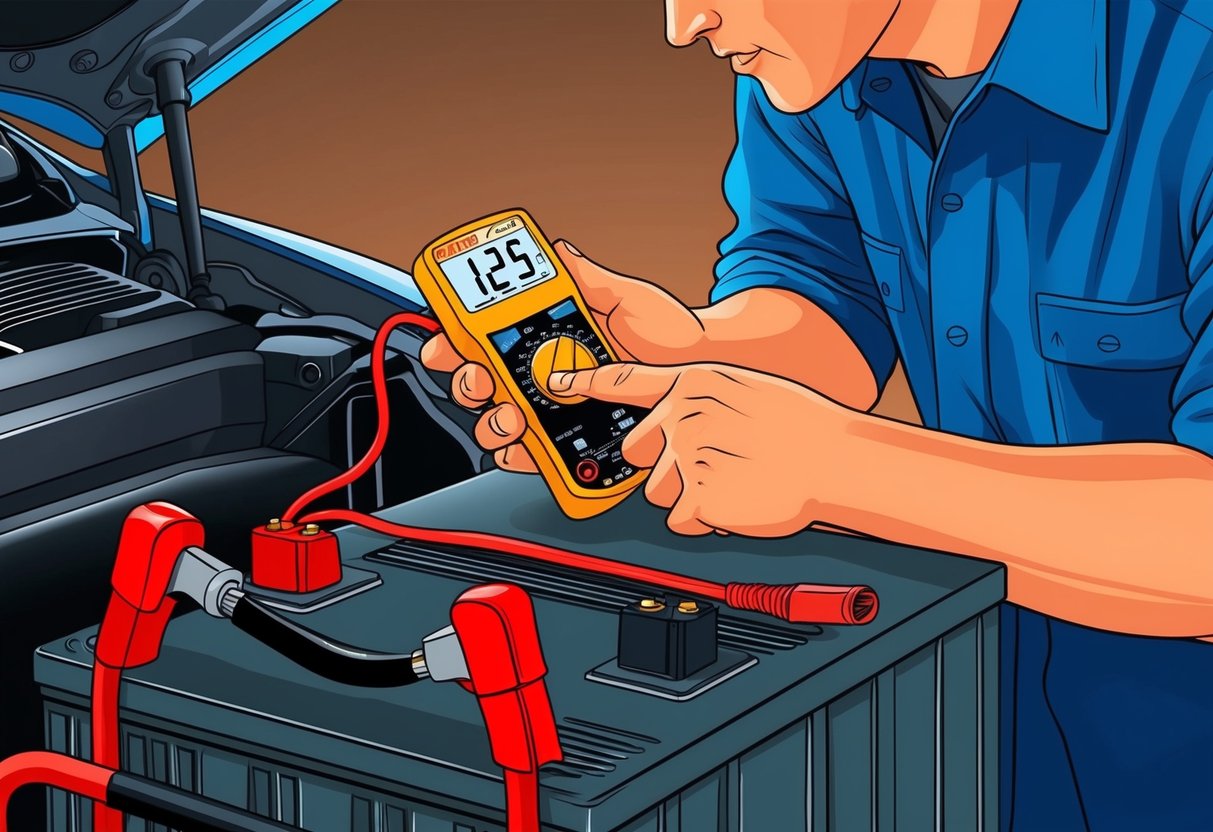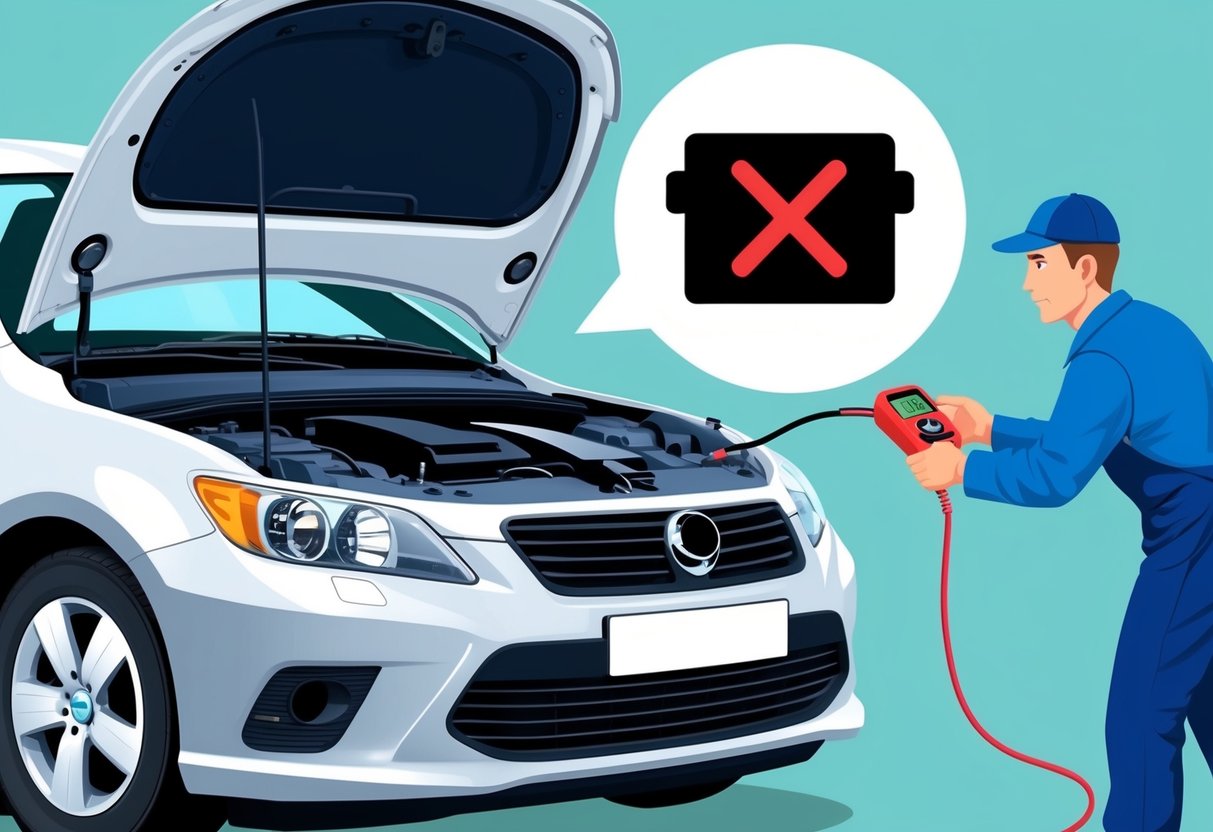
Testing Your Car Battery’s Health

Monitoring car battery health is key for preventing unexpected breakdowns. Testing can reveal whether the battery has sufficient voltage and can hold a charge, or if replacement is needed to avoid being stranded with a dead battery.
Using a Multimeter
A multimeter provides a quick, reliable way to check battery voltage at home. First, set the tool to DC voltage and ensure the engine and electrical components are off.
Attach the red probe to the battery’s positive terminal and the black probe to negative. A healthy battery should read around 12.6 volts or higher when the engine is off.
If readings are below 12.4 volts, the battery may be weakening and less able to start the car. Measurements below 12.0 volts suggest the battery is discharged or failing entirely.
For more details about voltage levels and replacement indicators, see this guide on how to test and replace a dead car battery. It’s important to test after the car has sat unused for several hours.
This helps avoid false positives caused by recent driving or alternator charging.
Professional Battery Testing
Automotive repair shops and service centers offer advanced battery testing. They use equipment that not only checks voltage but also conducts a load test to evaluate the battery’s performance under real-world conditions.
Technicians can measure cold cranking amps (CCA) and the battery’s ability to hold a charge. This process helps detect hidden issues like a weak cell or internal corrosion, even if the battery still powers the car.
Professional testing is especially helpful for batteries older than three years, which are at a higher risk of sudden failure. Regular expert checkups are recommended by organizations such as AAA, especially before seasons with extreme temperatures.
When to Replace Your Car Battery

Knowing when to replace your car battery depends on several factors, including its typical lifespan and the influence of both climate and driving habits. Both elements directly affect battery life and the need for timely battery replacement.
Average Battery Lifespan
Most car batteries last about three to five years. However, performance starts to drop before the battery fails completely.
After three years, a battery’s capacity may decrease, making it more likely to struggle during engine start or cause electrical issues. Some manufacturers recommend proactively replacing the battery after four years, even if it still seems to perform well.
This reduces the chance of a sudden breakdown. Regular testing of voltage levels—ideally 12.6 volts or higher when fully charged—helps monitor battery health.
Once the voltage drops significantly below this range, replacement is usually necessary, as low voltage signals the battery can no longer reliably hold a charge. Aging batteries may cause slow engine cranking, dim headlights, and dashboard lights to flicker—all clear signs a replacement is needed.
For a detailed list of signs to watch for, visit this guide on clear car battery symptoms.
Impact of Climate and Driving Habits
High temperatures can shorten battery lifespan, as heat accelerates the chemical reactions within and increases internal wear. In hot regions, batteries often fail closer to the three-year mark.
Cold climates are also tough on older batteries because starting the engine in low temperatures requires more power. Short, frequent trips prevent the battery from fully recharging.
If a vehicle is mostly used for commutes under 20 minutes, the alternator may not have enough time to restore the battery’s charge. Long periods of inactivity also allow batteries to slowly discharge, making a dead battery more likely.
Frequent use of electrical accessories—like headlights, infotainment systems, USB chargers, and heated seats—adds extra strain. Combining harsh climates and demanding driving habits will reduce battery life even further.
For more tips on replacing batteries under different conditions, review this overview of factors affecting car battery replacement.